Jodorowsky’s Dune and Xenosaga: The Death of Art
I had the pleasure of finally catching Jodorowsky’s Dune (2013) in a small art house cinema in downtown Rochester on a stale Sunday afternoon. The theater was sparsely populated, with only a handful of tired people eager to watch Frank Pavich’s year old documentary.
The film recounts and explores Chilean-French director Alejandro Jodorowsky’s notoriously unsuccessful attempt to film an adaptation of Frank Herbert’s monumental science-fiction novel Dune (1965) in the 1970s.
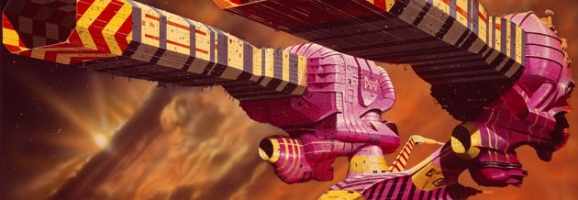
Jodorowsky and Dune
Having earned a profitable cult following from his films El Topo (1970) and The Holy Mountain (1973), the former, a surreal, acid western and the original “midnight movie,” the latter, produced by Beatles manager Allen Klein, with production money given by John Lennon and Yoko Ono, Jodorowsky was granted a large sum of money for a new film. He chose to adapt Dune, despite, as he admits in the documentary, never actually reading it.
Still, Jodorowsky saw Dune as a spiritual story, one concerning the entirety of the universe and the whole of mankind. Even forty years later, Jodorowsky speaks of his film with a sense of mystery and excitement. His Dune wasn’t quite Herbert’s Dune, and was somehow even larger and more all-encompassing.
Jodorowsky, as the documentary recounts, quickly burned through a large portion of his production money as his ideas and goals grew to enormous, unrealistic proportions.
He sought to collect a group of “spiritual warriors,” including prog rock bands Pink Floyd and Magma, H. R. Giger, Jean Giraud, Dan O’Bannon (of later Alien fame), Orson Welles, Mick Jagger and even Salvador Dali (who would only appear in the film if he was “the highest paid actor of all time”) to help with and act in the film.
Jodorowsky insisted on making the film as large as possible, and he needed a specific kind of energy and spirit from his cast and crew. Jodorowsky even rejected special effects supervisor Douglas Trumbell, of 2001: A Space Odyssey (1968), who had immense talent and fame, because he did not have the right energy and spirit.
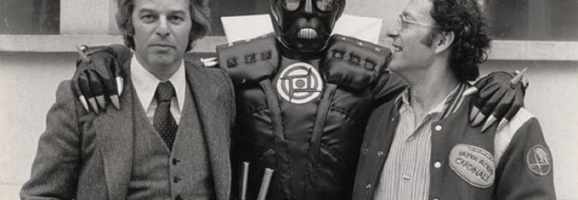
Jodorowsky’s final script would result in a “14-hour film,” which would simply be unprofitable and possibly unwatchable (in retrospect, I wonder why no one ever considered turning it into a trilogy, which is a popular form of storytelling today, and is what became of Star Wars).
Jodorowsky’s project was eventually shut down, and the rights to Dune would eventually fall to David Lynch, who directed a critically panned version, released in 1984.
What is most striking about the documentary is Jodorowsky and the crew’s belief that, if the film had been filmed and finished, it would have changed the way science fiction was thought of, as well as transforming the action flick into something more spiritual and philosophical. At one point, Jodorowsky claims that the film would have rivaled 2001: A Space Odyssey in terms of importance and influence if completed. And while it’s certainly difficult to imagine sitting in a theater and watching a fourteen hour film, I genuinely believe Jodorowsky’s assertions.
Despite all of Jodorowsky’s energy and insight, by the end of the documentary, one feels as if he has been to a funeral. The film centers on such a deep tragedy, a missed opportunity for life and for greatness. To put it in hyperbole, the film is about “the death of art.”
Takahashi and Xenosaga
After the film, I was immediately recalled to Xenosaga, a PlayStation2 video game project from the mind of Japanese game designer and writer Tetsuya Takahashi. The parallels between Jodorowsky’s Dune and Xenosaga are striking and worth exploring.
Some background: Tetsuya Takahashi began his mature career at Square, where he, along with his wife, Soraya Saga, proposed a script idea for Final Fantasy VII, but the script was deemed too dark and complicated for Square’s flagship series. The producers, including Hiromichi Tanaka, liked Takahashi’s work, though, and offered him his own game. Xenogears, a complex character study with religious and psychological themes, was released in 1998 and became something of a cult classic among Square’s other JRPGs.
The game was monumental, with a colossal sci-fi fantasy plot, a diverse, worldly cast, and a theme of universal grief. Fans and critics alike would go on to cite the game as having one of the greatest stories ever told in a video game, amid a deep seated backlash against the game for being too convoluted or pretentious.
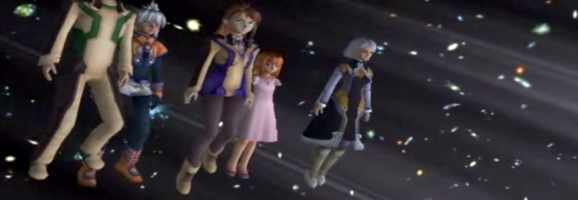
The complicated history of the origins of Xenosaga, Takahashi’s next project, are mired in mystery, rumor, and scandal. A year after the game was released, Takahashi left Square to form his own studio, Monolith Soft, taking many of Square’s brightest developers with him, including art director Yasuyuki Honne, Koh Arai, and Hiroshi Uchiyama.
Yasunori Mitsuda, the musician that Takahashi worked with on Xenogears, would also compose the soundtrack for the first Xenosaga game. Masato Kato, the script writer for Chrono Trigger (1995), expressed interest in leaving as well (and would, eventually), but was asked to direct Chrono Cross for Square instead.
Like Jodorowsky, Takahashi sought to collect his own “spiritual warriors,” and both directors experienced a kind of cult of personality among their peers. The nature of both mediums forces the directors to find and be able to work with a large cast with varying talents. Large-scale games and films are difficult to create, and thus need a group of “apostles” to complete.
Now partnered with Namco, Takahashi led the development of his highly anticipated epic, Xenosaga. Focusing on a theme of universal fear, Takahashi’s goal was to explore mankind’s history through a six-part game series, a series with three major story arcs, and one game which was originally believed to include a remake of Xenogears. It would be a story on a scale that was (and still has not) been seen in video games, a space opera that would be crushing, full of spiritual and philosophical ideas.
Takahashi, like Jodorowsky, wanted his project to expand his audience’s mind, to act as a prophet, and to be larger than life. If both teams were apostles, then this prophet analogy is even more apt. In both cases, nothing with such a large scale had been attempted in either respective medium.
Xenosaga Episode I: Der Wille zur Macht, a reference to Nietzsche’s “The Will to Power,” was released in 2002 in Japan, and 2003 in the US. Reactions were mixed, one of the biggest complaints relating to how long the game’s cutscenes were, and how the game talked too much for its own good. Fans and critics noted that Takahashi’s ideas were interesting, but that the medium was not right for telling the kinds of stories he wanted. This notion mirrors the idea that no one would want to sit through a fourteen hour film, no matter how great it might be.
Sales were disappointing, and after the game’s release, no one, Takahashi or otherwise, ever referred to a “six part epic” again. Even worse, Episode I seemed to not even barely cover its portion of the three planned story arcs. Takahashi briefly flirted with a “four part series” in some interviews afterward. For Episode II, Namco seniors reorganized Monolith, and Takahashi stepped down from being the series’ director, only serving to write the original script, which barely survived development anyway.
Xenosaga Episode II: Jenseits von Gut und Böse (2005) was a mess of a game, both in terms of gameplay and narrative. It was clear that Namco had tried to significantly change the series, and it would not be a stretch to say that Episode I is to Episode II what Jodorowsky’s Dune is to Lynch’s. Soraya Saga was very vocal to her fans about the way Takahashi’s original ideas were bastardized, and that she felt he and she had been shafted.
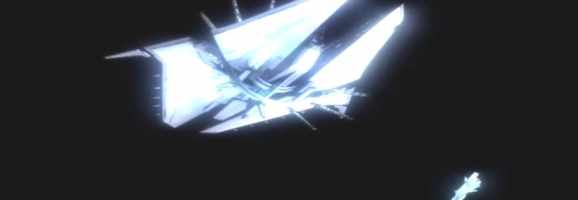
For Xenosaga Episode III, Monolith seems to have worked closer with Takahashi’s original material, and while the game was critically well received and popular, the entire team, along with Takahashi, were sick of Xenosaga and no longer wanted to work on it. The six-part epic had been pared down to a still grand but average trilogy, and it was obvious Takahashi was unsatisfied with the final product.
Takahashi’s Xenosaga and Jodorowsky’s Dune were too large for their respective mediums to encompass. Both projects had extreme financial problems and time issues, and while Xenosaga did at least get three games, neither project was ever completed.
Reflection
Fans have often questioned why Takahashi did not write a novel instead of making a game series, and certainly a novel would have been more feasible and definitely cheaper to produce. Jodorowsky could not make an adaptation novel out of a preexisting novel, but he could have taken his story into other mediums. In the documentary, Jodorowsky does note that some of his concepts for Dune would later show up in his graphic novels. Novels may seem like a less grand and theatrical medium, but they can be as long and as wide as their authors see fit. Would a Xenosaga novel have been adequate?
Thematically, Xenosaga and Dune are very similar. Both are concerned with the organization of the universe and man’s place in it, concerned with spirituality and the ramifications of space travel. A space opera is the perfect place to explore themes of science and spirituality, technology and the mind. While Jodorowsky’s Dune was never conceived, these statements can easily be inferred about the film.
And possibly most striking is that both artists sought to have their art act as a prophet for their audiences (kids watching movies and kids playing video games). There is a long history of art as modern religion, and while it would be a stretch to claim that someone like Takahashi was “trying to make a religion,” it is worthwhile to refer back to Richard Wagner’s (1813-1883) ideas of the theater as a kind of new church, the total art, a modern gospel.
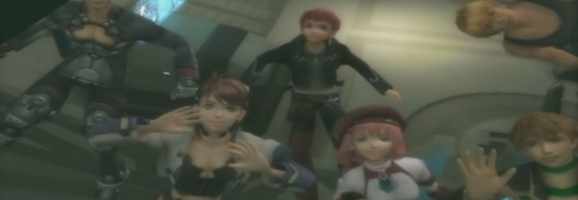
For Wagner, traditional religion had been made shallow and tired by greed and modernization, and thus needed to be reformed. As an opera composer, Wagner believed that through music, story, and visual art, he could reach the sublime and expand his audience’s mind through the largeness and spirituality of his work.
Several decades later, Jodorowsky (and even later) Takahashi, a filmmaker and game designer, working in their own mediums, want to do the same thing, turn their art into something large and spiritual. And in a similar vein to Wagner, some portion of the world would be impressed and affected, but with little in the way of unsubtle reformation.
It would be simple to reduce the situation to a claim of “big business doesn’t care about art,” or, as director Nicolas Winding Refn said in the documentary, “they’re [the Hollywood producers] afraid.” But both instances of the artists begs to differ. Jodorowsky refused to not have Dali star in his film, no matter the cost. Takahashi’s work was deemed too dark for a Final Fantasy title, but Square still gave his script a greenlight for a new project anyway.
Rather, the time, money, and the nature of the mediums are what held the two artists back from achieving a new scale of grandiosity. They were akin to architects seeking to build an entire city, and like with Oscar Niemeyer and his vision of Brasilia, the world was not ready or able to accommodate their large ideas.
In a sense, both works were “too ahead of their time,” yet, both works would only truly have had the right effect during their times, making their true value lost in limbo forever. Both artists would go on to lead successful careers (Jodorowsky continues to make films and enjoys his status as a cult classic director, while Takahashi’s Xenoblade Chronicles won several highly esteemed game awards in 2011 and 2012), but these failures to produce are a true loss to both mediums.
With the recent popularity of crowdfunding, especially through Kickstarter, with which various entities (Zach Braff, Spike Lee, and Marina Abramovic, to name three) have financed large scale projects, as well as the advent of social media, it’s curious to wonder if either project could have benefitted from a different financial organization. Creators are learning that through intelligent and thoughtful advertising, people and fans, rather than traditional producers, can help back large projects. More and more, creators are having to rely less of these traditional avenues of monetary backing.
Perhaps a slightly scaled down version of either project would have easily been crowdfunded, but even that is not ideal.
Unfortunately, even for industry greats like Jodorowsky and Takahashi, everything runs on time and money, of which there never seems to be quite enough. Looking further outward, the issue is with the physicality of the human experience, the fact that ideas are not products, and that human bodies can only do so much. It’s a spiritual, existential qualm, and an important one, one that would, in some way or another, be addressed in both pieces, with some unintentional irony.
Mankind is matter, but he (and she) is also mind and soul. The physicality of art is its most difficult (and absurd) burden. This is especially true with film and games.
What do you think? Leave a comment.











Though I am still unsure whether Jodorowsky was a great filmmaker, it is without doubt he is a great artist and human being. His perspective and take on films is the most refreshing thing i’ve seen in a long time. It makes me so sad that his version of Dune was never made, but at least this documentary is out there and his immense vision, ambition, and pure faith in the power of films can inspire others to follow in his giant footsteps.
Because of this documentary I bought a copy of ‘The Incal’, a graphic novel he made with Moebius. Very enjoyable.
okay, jodorowsky had great vision, art, creativity etc. but has anyone ever seen his films?! i’ve seen el topo and the holy mountain and they are both surrealistic hipster bullshit. he may convey (at least try to) a lot of ideas with his films but his films are not even watchable.
Seeing segments of his films reminded me of Zardoz. Attention grabbing images, surreal music, and dialogue that means absolutely nothing. However, I will see Santa Sangre and give him a chance. On a side note, why wouldn’t he adapt Bradbury? That seems like an obvious fit.
El Topo and Holy Mountain are awesome surrealist escapist films they are very enjoyable to many, I’m sorry you didn’t like them. That happens with films not made for the masses I personally loved them, I must be a hipster. I really like when films drift away from the norm to create something original and that is what Jodo offers not like these cookie cutter directors who will concede to focus groups.
You should watch Fando y Lis, one of his earlier films. It sets the stage for what Jodorowsky was doing later. Some of his themes in El Topo may be a little weak or outdated, but to reduce it to “hipster bullshit” is pretty out of line.
Why not put your energy into hating Le Corbusier or something…??
Proyas, Winding Refn and Del Toro would be my top 3. maybe throw Duncan Jones in there as well.
Found this fascinating even though I’ve not played Xenosaga or watch the documentary.
Let me preface my comments by saying that I first read Dune when I was 13 or so, loved it, read all the sequels in short order, and have read nearly every Dune related novel that has come out since. (Still working on the last few by Brian Herbert & Kevin Anderson.) I’ve re-read Dune probably a dozen times.
I saw the Dino DeLaurentis/Lynch movie the day it opened, and have watched all the TV mini-series that have been made. Until recently, I never heard of Jodorowsky and his attempt at a Dune movie. I knew nothing about the man.
That being said, after hearing his desire to make it like an LSD trip, I simply don’t understand why he wants to do that or how it relates to the novels. The only parts of the novels that I believe even touch on an emotional/metaphysical/spiritual subject are the whole ‘Water of Life’ deal and ‘The Sleeper must Awaken’ theme. Everything else is good old fashioned sci-fi story telling, plotting, and action.
Nowhere in the novels do I remember the space ships being bright colors. The only mention of grotesque architecture related to the Harkonnens. Emporer Shaddam IV comes across as vain, villianous, and power hungry, but not in an acid trip kinda of way. Salvador Dali as Shaddam? Really?
The whole idea of making it like an LSD trip seems completely out of place to me – Like Aragorn launching a tactical nuke at Sauron, or someone turning Masterpiece Theatre into a Saturday morning children’s cartoon.
Yeah, definitely, but this is what makes it kind of great.
Just like how Xenogears is taking some kid’s JRPG Final Fantasy I generic idea and turning into this metaphysical nightmare, or, your own example, turning Masterpiece Theatre into a cartoon, it’s sort of crazy and visionary and it all seems really unnecessary, but it’s actually exciting and wonderful.
It’d be like if they made a really trippy, dark Zelda game with religious and psychological themes. That might suck awfully, but it might also be a hit.
You seem under the impression that filmmakers are tied to the themes and ideas of the book they are adapting. A lot of great filmmakers like Jodorowsky (also Kubrick, Tarkovsky, etc.) did not see it that way. I think for Jodorowsky, Dune was a vessel in which he would put his own view of the world and the popularity of the book would insure that it would be seen more than any other film he could do. If you want to change the world you need to have an audience right?
This is great! Jodorowsky’s Dune is one of my favorite films of the year so far. I love the comparison to Xenosaga. I was completely unfamiliar with the history of that game’s development, and sadly, I have also never played it. (I was always intrigued, though, by the use of Nietzsche’s book titles in the game’s titles.)
I disagree, though, with the admittedly hyperbolic statement that Jodorowsky’s Dune is about the death of art. Also, I did not feel like I had been to a funeral. Instead, I felt like the film was about the impossibility of death in art. Even though Jodorowsky’s film was never realized, its development still managed to have direct influences on many later works of art. For example, as the documentary indicates, Dan O’Bannon and H. R. Giger first collaborated together as Jodorowsky’s spiritual warriors. Alien, then, is almost like Jodorowsky’s bastard child. Despite the apparent death of Dune, the unmade film still provided lifeblood for so many later films, graphic novels, etc. It lives on.
Art, your comment is more moral and insightful than my whole article ; )
You’re definitely right about the “impossibility of death in art,” and Alien definitely is Jodorowsky’s bastard child. That’s a great way to think about it.
But I still can’t help but find it immensely tragic when both artists’ projects are just “too big” to ever be made period. I’m too much a fan of the grandiose to see it any other way. Your view’s the less cynical of the two, though.
I’m trying to figure out how Synecdoche NY fits in to this… q: p
Yes, there is an undeniable longing for the original vision that will never truly fade. I often think about Kubrick’s Napoleon in this regard.
By the way, I tweeted a link to your article, and Stephen Scarlata (one of the producers on Jodorowsky’s Dune) favorited the tweet!
I should get on Twitter more…it seems…useful…
That’s really cool ; )
I have not seen or read Dune, though I might now that it has been well compared to one of my favorite video games series of all time. This article helped me to understand why Xenosaga as a series felt so discombobulated as I played it. I speak particularly of the differences from Part One to Part Two. It only makes sense that since the development team was akilter, the series became so as well.
Xenosaga also had an anime adaptation (that I have yet to watch). I assume, it, too, fell short of what the series was originally supposed to be.
I very much enjoyed your article. When I finally, sadly, finish Xenosaga III, I will keep it in mind.
The anime, from what I’ve seen, is very lackluster. It’s probably worth skipping…
That being said, I’d check out Jodorowsky’s work if you like Xenogears/Xenosaga (especially Xenogears). El Topo is very cool and slick, and comes from a place similar to where Xenogears came from thematically.
Interesting article. I’ve never seen the documentary but I did play part of Xenosaga I. I honestly really dug the long cut scenes but I never finished the game because I just wasn’t a fan of the gameplay. I feel like, ignoring production issues, video games as a medium are well suited for long story arcs. RPGs often clock in at the 40-60 hour mark and, though Xenosaga takes it to the extreme, normally a healthy chunk of those hours are storytelling. Maybe the battle system in Final Fantasy X spoiled me, but Xenosaga didn’t really have the gameplay to back up it’s story. While the basic turn based mechanics weren’t great, the gameplay issues were definitely accentuated by the division between gameplay (battles/ running around) and storytelling (cut scenes). I know newer games (and even some older games) have tried to integrate the two more, but I wonder if Xenosaga had taken a more organic approach to storytelling if it would have been better received.
I know I’m alone in saying this, but I think the gameplay in Xenosaga I is actually pretty good. The character growth for battle is unprecedentedly complex (all those different kinds of experience points), and while I didn’t initially like the stop and go of the dungeons, I think the game handles itself well. Most people think Xenosaga III had the best gameplay, and it’s certainly the most fluid, but Xenosaga I had a more interesting feeling.
Good article. Thoughtful and insightful.
This does feel like something out of the 70s.